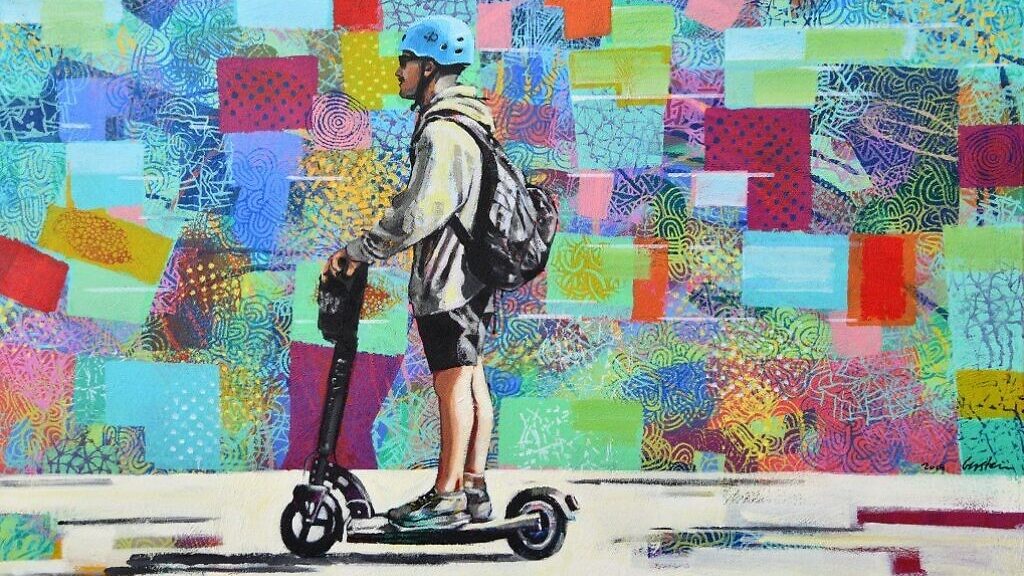Artist David Gerstein Returns to Childhood in New Tel Aviv Expo (with VIDEO)
Prolific Israeli leaves sculpture behind, goes back to painting after pandemic forces him to lay off staff
The road to David Gerstein’s studio is dusty, littered with factories of different sorts and surrounded by the scenic forests of the Judean foothills.
Located between Jerusalem and Tel Aviv near the city of Beit Shemesh, the four-story workshop stands out in the industrial landscape with its large and colorful metal sculptures out front.
Inside is a tornado of eye-catching art − from giant mobile sculptures to delicate 3D paper cutouts and mass-produced Judaica. This is where Gerstein, one of Israel’s most well-known contemporary artists, produces his works in a medley of media for both the local and international markets.
After decades of making a name for himself as a creator of monumental sculpture, Gerstein has returned to his painting roots and will be exhibiting 25 new works at a solo exhibition in Tel Aviv titled “U-Turn” that opens on July 9.
While the COVID-19 pandemic has dealt a harsh blow to artists around the globe, for Gerstein it has also opened the door to reigniting his passion for figurative painting.
“A lot of my activity around the world stopped because galleries are closed and they’re hardly working, which gave me a great opportunity to leave my sculptures alone and to concentrate on painting,” Gerstein told The Media Line during a recent tour of his studio. “In painting, I don’t need the help of assistants; I do everything myself.”
From potters to painters and print specialists, Gerstein currently has a team of 17 assistants helping him create art on a daily basis. Before the pandemic, the 76-year-old artist employed roughly 30 assistants but he was forced to let go of many of them.
A lot of my activity around the world stopped because galleries are closed and they’re hardly working, which gave me a great opportunity to leave my sculptures alone and to concentrate on painting. In painting, I don’t need the help of assistants; I do everything myself
The Tel Aviv show marks the first time in many years that Gerstein’s figurative acrylic paintings will be exhibited. Most offer realistic representations of urban life, including wistful depictions of figures sitting or standing on Tel Aviv balconies and couples riding on scooters against vibrant city backdrops.
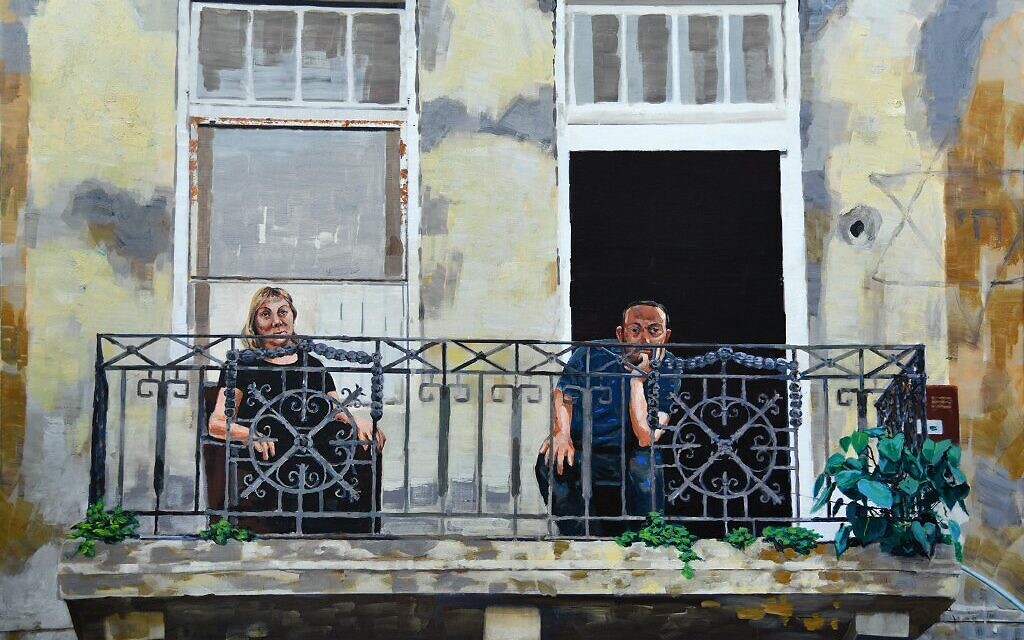
Part of David Gerstein’s new painting series, which will go on display in Tel Aviv starting July 9. (Courtesy)
He cites several important influences in his work, among them British painter David Hockney, American realist Edward Hopper and modern master Pablo Picasso.
“The balconies were started via childhood memories as I imagined them later on in life,” Gerstein explained. “I imagined the generation of my parents − Tel Aviv of the 1950s − where they were sitting on the balconies. The balconies were very special and gave the look of the city.”
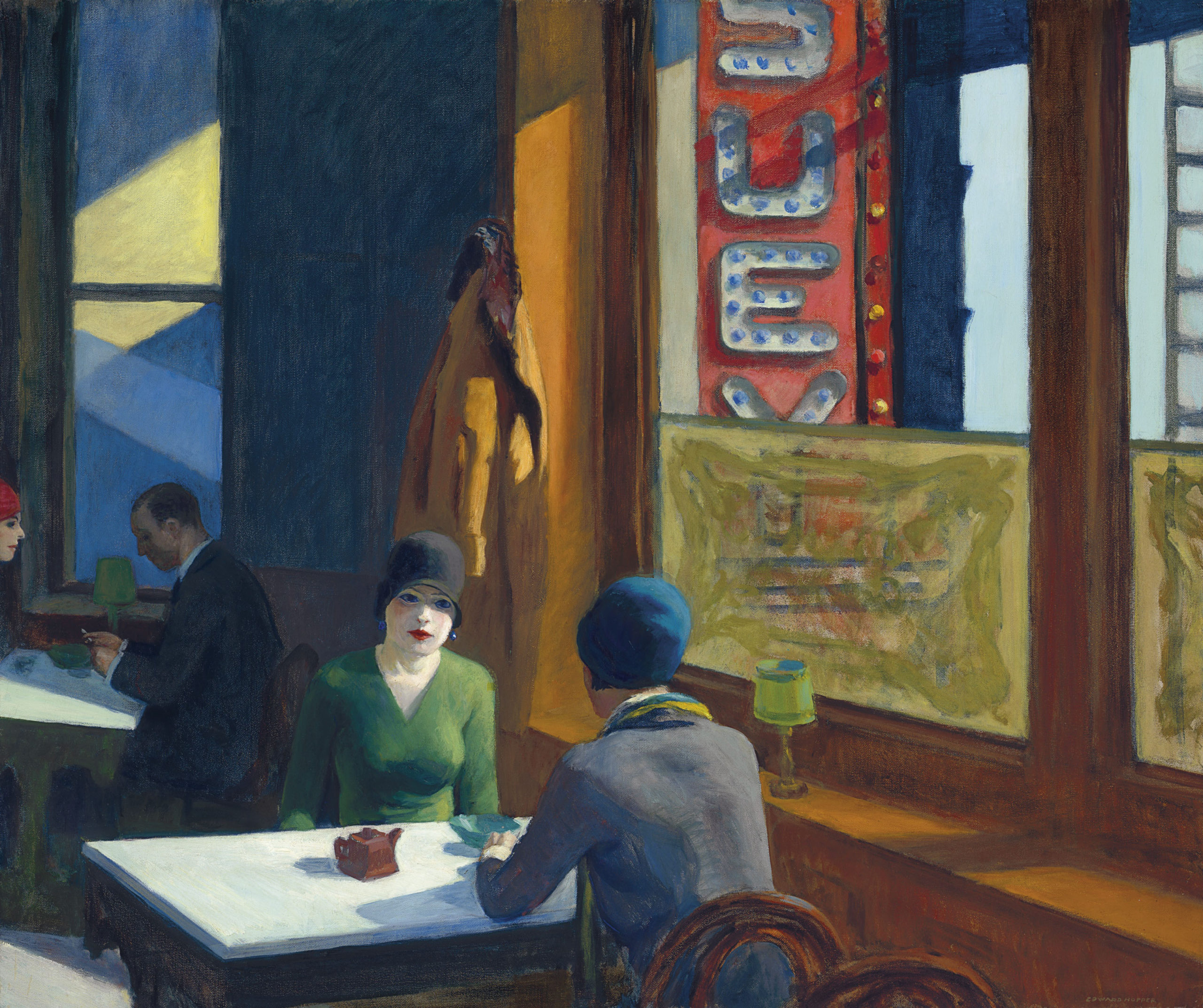
David Gerstein cites Edward Hopper as one of his major artistic influences. Pictured is Hopper’s painting “Chop Suey” (1929). (Wikimedia Commons)
Gerstein’s other series that is slated to go on display showcases reflections of European cityscapes as seen via car windshields. They were inspired by an earlier series Gerstein says he began in 1990 while living in Paris.
‘We Live in Different Worlds’
Born in Jerusalem in 1944, Gerstein currently lives in the central Israeli city of Ramat Gan near Tel Aviv.
As children, he and his twin brother, Jonathan, were both artistic and loved to draw. After completing his compulsory military service in the Israel Defense Forces, Jonathan went on to Paris to pursue his artistic education, with David Gerstein following sometime later.
“As a child, I developed very fast because my twin brother was also very talented in painting,” Gerstein recounted. “We both completed each other. He was my catalyst when I was a child.”
At some point in his mid-30s, Jonathan became increasingly religious and he eventually joined the ultra-Orthodox (haredi) Jewish community, leaving behind his secular family and turning away from the mainstream art world.
According to Gerstein, Jonathan (who also goes by the name Yoni) lives in the haredi bastion of Bnei Brak and is very well known and respected in the religious sector.
Despite the gap between the two brothers, Gerstein still thinks of his brother fondly and has even depicted his likeness in some of his wall sculptures.
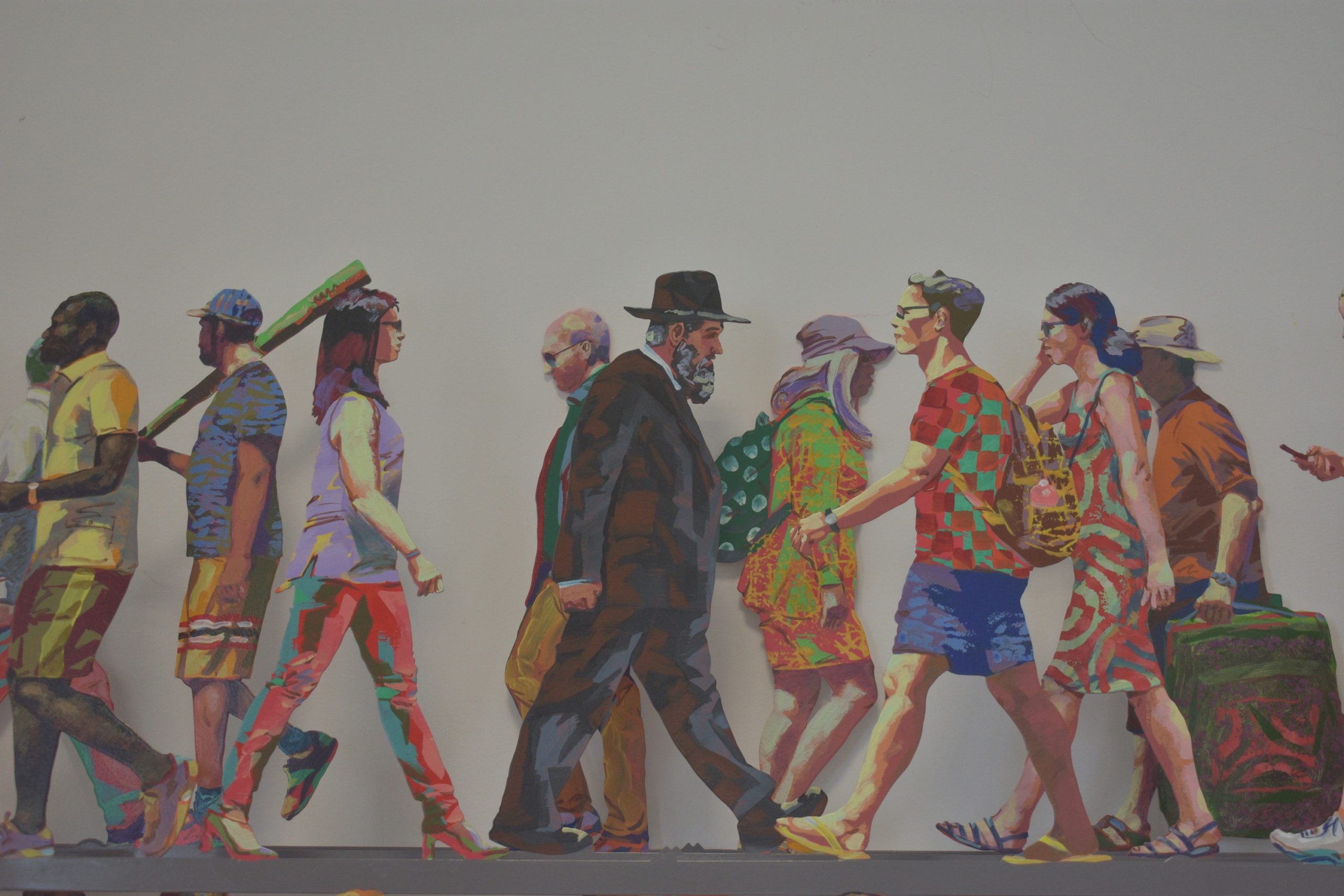
One of David Gerstein’s wall sculptures features a depiction of his brother Jonathan, who is a member of Israel’s ultra-Orthodox Jewish community. (Raymond Crystal)
“[Yoni is] a cartoonist and illustrator for many, many children’s books and Torah books,” Gerstein related. “I like him very much and we keep in touch but we live in different worlds.”
As for Gerstein himself, his monumental works, which blur the divide between painting and sculpture, decorate public spaces and remain prominent landmarks in urban environments around the globe. His 60-foot-tall work titled “Momentum” (2008) remains Singapore’s tallest outdoor public sculpture, for instance.
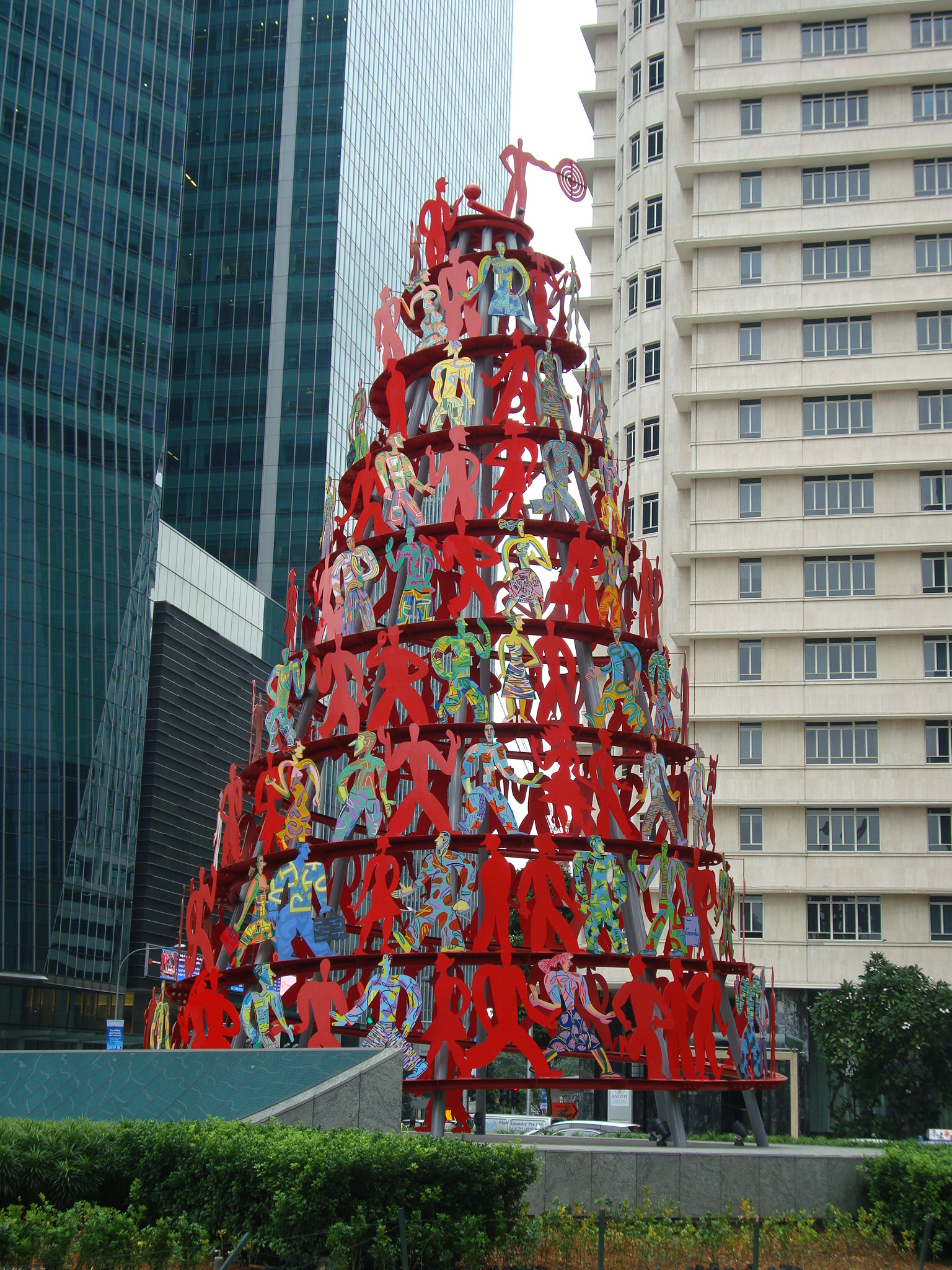
David Gerstein’s monumental sculpture “Momentum” (2008) in Singapore. (Courtesy)
In fact, Gerstein has found notable success in East Asia with his large-scale sculptures and continues to receive numerous commissions from that region. In 2016, he received a prestigious award for a sculpture he created featuring cyclists and runners at Hsinchu County Stadium in Taiwan.
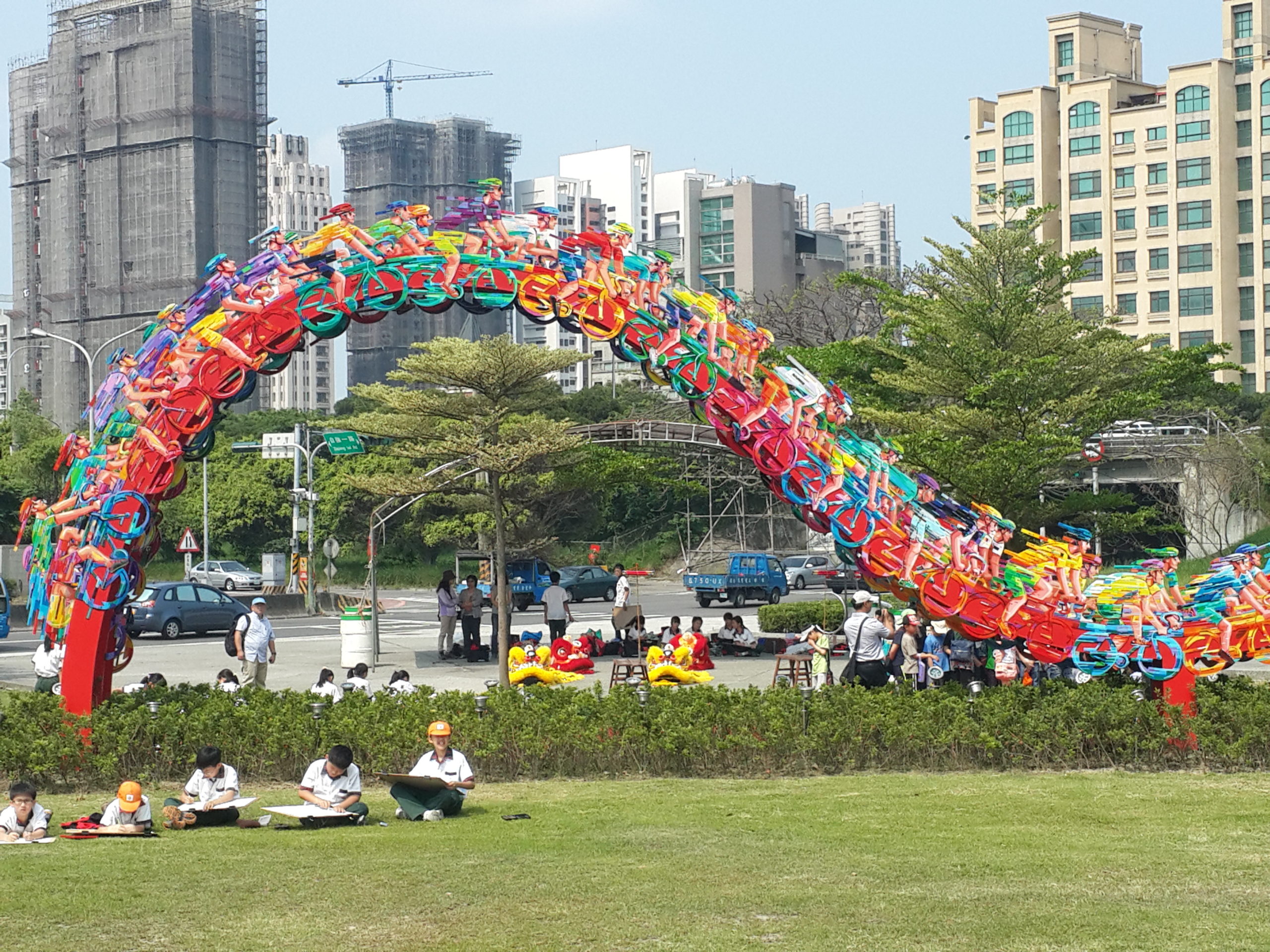
Gerstein’s award-winning outdoor sculpture, “Peloton Wave” (2014) stands outside the athletic stadium in Hsinchu, Taiwan. (Courtesy)
“The frequent question [I get] is how long it takes me to make [a sculpture] and I always say about 40 years,” Gerstein said. “So they understand that, you know, it’s not the time of the actual work. It’s the time of developing the idea and making it come to life after a lot of experiments.”
Gerstein also believes in bringing his brand of eye-popping pop art to the masses in other ways. Unlike his larger works, his smaller pieces are not hand-painted but laser printed in multiples in order to make them accessible to art lovers everywhere.
“A small object can sell for $100 and a big monumental work can be $1.5 million,” he clarified. “It was important for me to do small-scale accessible works because I think that the artist should reach the audience in many ways. Most people cannot afford expensive works.”
Curated by Vera Pilpoul and Arie Berkowitz, “U-Turn” opens at the Tel Aviv Artists House on July 9. and runs until August 1.

